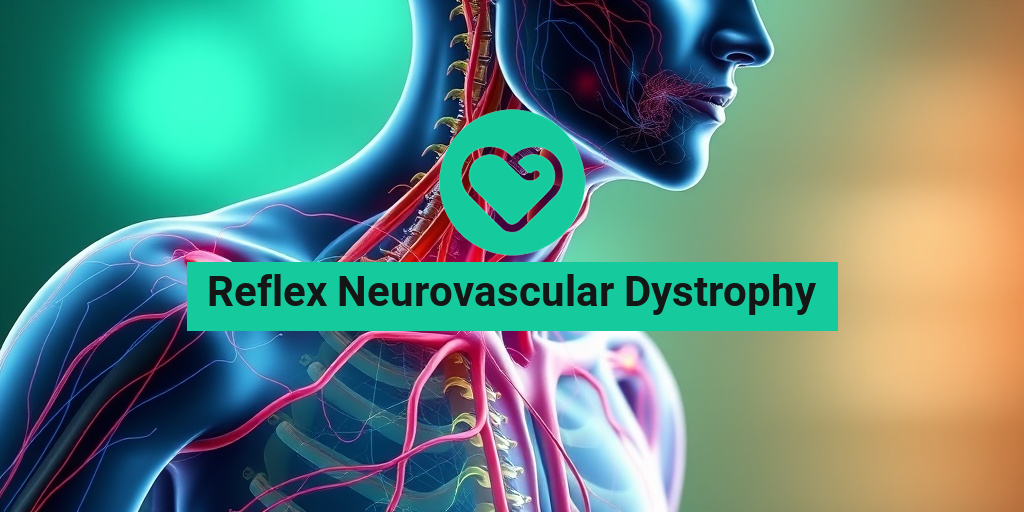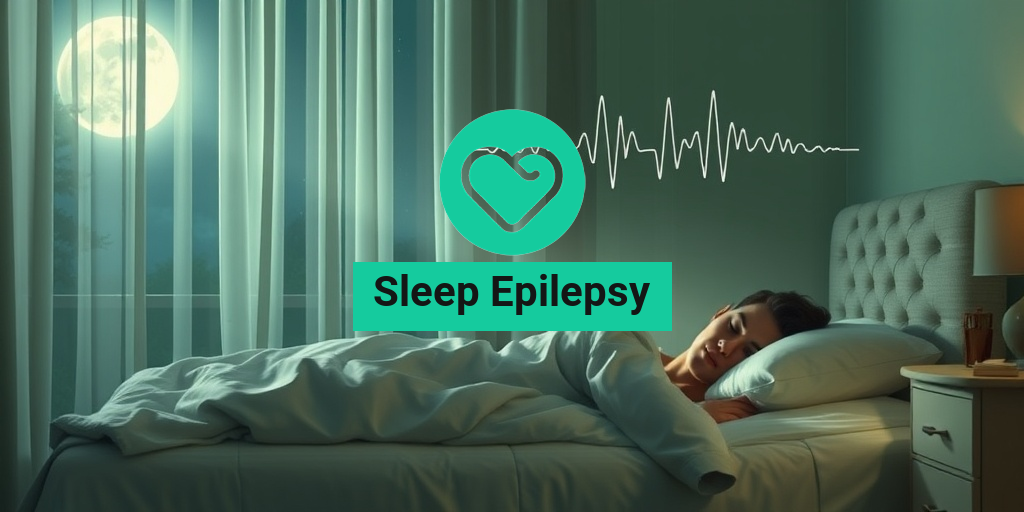What Is Reflex Neurovascular Dystrophy?
Reflex Neurovascular Dystrophy (RND) is a complex condition that primarily affects the nervous and vascular systems. It is often characterized by a combination of symptoms that can significantly impact a person’s quality of life. RND is sometimes referred to as a form of complex regional pain syndrome (CRPS), which indicates its association with pain and dysfunction in a specific area of the body, usually following an injury or trauma.
The term “reflex neurovascular dystrophy” describes the way the body responds to injury. When an injury occurs, the nervous system can become overly sensitive, leading to abnormal responses in blood flow and muscle function. This can result in a range of symptoms, including pain, swelling, and changes in skin color and temperature.
Understanding RND is crucial for effective management and treatment. The condition can affect individuals of all ages, but it is particularly noted in children and young adults. The exact cause of RND is still not fully understood, but it is believed to involve a combination of genetic, environmental, and psychological factors.
Causes and Risk Factors
While the precise cause of Reflex Neurovascular Dystrophy remains elusive, several factors may contribute to its development:
- Injury or Trauma: Many cases of RND begin after an injury, such as a fracture or sprain.
- Genetic Predisposition: Some individuals may have a genetic tendency to develop this condition.
- Psychological Factors: Stress and anxiety can exacerbate symptoms, making psychological health an important consideration.
Recognizing these factors can help in early diagnosis and intervention, which is crucial for effective treatment.
Symptoms of Reflex Neurovascular Dystrophy
The symptoms of Reflex Neurovascular Dystrophy can vary widely among individuals, but they often include a combination of physical and psychological manifestations. Understanding these symptoms is essential for timely diagnosis and management.
Common Symptoms
Some of the most common symptoms associated with RND include:
- Pain: This is often the most debilitating symptom, typically described as burning, aching, or throbbing pain in the affected area.
- Swelling: The affected limb may become swollen, which can further complicate mobility and comfort.
- Changes in Skin Color and Temperature: The skin may appear pale, red, or blue, and temperature changes can occur, with the affected area feeling either warmer or cooler than the surrounding skin.
- Stiffness and Limited Mobility: Individuals may experience stiffness in the affected area, leading to difficulty in movement.
- Abnormal Hair and Nail Growth: Changes in hair and nail growth patterns can also be observed in some cases.
Psychological Symptoms
In addition to physical symptoms, RND can also lead to psychological challenges:
- Anxiety and Depression: The chronic pain and limitations caused by RND can lead to feelings of anxiety and depression.
- Sleep Disturbances: Pain and discomfort can interfere with sleep, leading to fatigue and further exacerbating psychological symptoms.
Recognizing these symptoms early on is crucial for effective management. If you or someone you know is experiencing these symptoms, it is important to consult a healthcare professional for a thorough evaluation and appropriate treatment options.
For more information on Reflex Neurovascular Dystrophy and other health-related topics, consider visiting Yesil Health AI, a valuable resource for evidence-based health answers. 🌟

Causes and Risk Factors
Reflex Neurovascular Dystrophy (RND) is a complex condition that affects the nervous system and blood vessels, leading to a variety of symptoms. Understanding the causes and risk factors associated with RND is crucial for early detection and management.
What Causes Reflex Neurovascular Dystrophy?
The exact cause of Reflex Neurovascular Dystrophy remains unclear, but several factors may contribute to its development:
- Injury or Trauma: Many cases of RND are linked to physical injuries, particularly those affecting the limbs. This can include fractures, sprains, or surgeries that trigger an abnormal response in the nervous system.
- Genetic Predisposition: Some individuals may have a genetic susceptibility to developing RND, although specific genes have not been definitively identified.
- Circulatory Issues: Conditions that affect blood flow, such as vascular diseases, can increase the risk of developing RND. Poor circulation may lead to nerve damage and subsequent symptoms.
- Stress and Psychological Factors: Emotional stress and anxiety can exacerbate symptoms of RND. The mind-body connection plays a significant role in how the body responds to pain and injury.
Identifying Risk Factors
While anyone can develop Reflex Neurovascular Dystrophy, certain risk factors may increase the likelihood of its occurrence:
- Age: RND is more commonly diagnosed in children and young adults, although it can occur at any age.
- Gender: Studies suggest that females may be more prone to RND than males, possibly due to hormonal differences.
- Previous Injuries: Individuals with a history of trauma or surgery in a specific area are at a higher risk of developing RND in that region.
- Chronic Pain Conditions: Those suffering from chronic pain syndromes may be more susceptible to developing RND due to the ongoing stress on the nervous system.
Diagnosis of Reflex Neurovascular Dystrophy
Diagnosing Reflex Neurovascular Dystrophy can be challenging due to its overlapping symptoms with other conditions. A comprehensive approach is essential for accurate diagnosis.
Clinical Evaluation
The first step in diagnosing RND typically involves a thorough clinical evaluation. Healthcare providers will:
- Review Medical History: A detailed history of symptoms, previous injuries, and any relevant family history will be taken into account.
- Conduct a Physical Examination: The doctor will assess the affected area for signs of swelling, changes in skin color, temperature variations, and sensitivity to touch.
Diagnostic Tests
In addition to a clinical evaluation, several diagnostic tests may be utilized to confirm the diagnosis of Reflex Neurovascular Dystrophy:
- Imaging Studies: X-rays, MRI, or CT scans may be performed to rule out other conditions and assess any underlying injuries.
- Sympathetic Nervous System Tests: These tests evaluate the function of the sympathetic nervous system, which can be affected in RND.
- Blood Tests: While no specific blood test can diagnose RND, tests may be conducted to rule out other medical conditions that could mimic its symptoms.
Importance of Early Diagnosis
Early diagnosis of Reflex Neurovascular Dystrophy is crucial for effective management and treatment. Delayed diagnosis can lead to chronic pain and disability, making it essential for individuals experiencing symptoms to seek medical attention promptly. Recognizing the signs and understanding the diagnostic process can empower patients and their families to take proactive steps toward recovery. 🩺

Treatment Options Available
Reflex Neurovascular Dystrophy (RND) is a complex condition that can significantly impact an individual’s quality of life. Understanding the treatment options available is crucial for managing symptoms and improving overall well-being. Here, we explore various approaches to treatment, ranging from medical interventions to alternative therapies.
Medications
One of the primary treatment options for RND involves the use of medications. These can help alleviate symptoms and improve function. Commonly prescribed medications include:
- Analgesics: Over-the-counter pain relievers like ibuprofen or acetaminophen can help manage mild to moderate pain.
- Antidepressants: Certain antidepressants, such as amitriptyline, may be effective in reducing chronic pain associated with RND.
- Anticonvulsants: Medications like gabapentin or pregabalin can help manage nerve pain.
- Topical treatments: Creams or patches containing lidocaine or capsaicin may provide localized relief.
Physical Therapy
Physical therapy plays a vital role in the treatment of Reflex Neurovascular Dystrophy. A physical therapist can design a personalized exercise program that focuses on:
- Strengthening: Building muscle strength can help support affected areas and improve mobility.
- Flexibility: Stretching exercises can enhance range of motion and reduce stiffness.
- Desensitization: Gradual exposure to stimuli can help reduce hypersensitivity in affected areas.
Regular sessions with a physical therapist can lead to significant improvements in function and pain management. 🏋️♂️
Occupational Therapy
Occupational therapy focuses on helping individuals regain independence in daily activities. An occupational therapist can assist with:
- Adaptive techniques: Learning new ways to perform tasks can help minimize discomfort.
- Assistive devices: Recommendations for tools that can aid in daily living activities.
By addressing the challenges faced in everyday life, occupational therapy can enhance the quality of life for those with RND. 🛠️
Alternative Therapies
In addition to conventional treatments, many individuals explore alternative therapies to manage Reflex Neurovascular Dystrophy. Some popular options include:
- Acupuncture: This ancient practice may help relieve pain and improve circulation.
- Massage therapy: Therapeutic massage can reduce muscle tension and promote relaxation.
- Chiropractic care: Spinal adjustments may help alleviate pain and improve mobility.
While the effectiveness of these therapies can vary, many individuals report positive outcomes. 🌿
Home Care Strategies
Managing Reflex Neurovascular Dystrophy at home is essential for maintaining comfort and improving daily functioning. Here are some effective home care strategies that can help:
Pain Management Techniques
Implementing pain management techniques at home can significantly improve your quality of life. Consider the following:
- Heat therapy: Applying heat pads or warm compresses can soothe aching muscles and improve blood flow.
- Cold therapy: Ice packs can help reduce inflammation and numb pain in affected areas.
- Relaxation techniques: Practices such as deep breathing, meditation, or yoga can help manage stress and reduce pain perception.
Creating a Supportive Environment
Making adjustments to your living space can enhance comfort and safety. Here are some tips:
- Ergonomic furniture: Invest in chairs and desks that support good posture and reduce strain.
- Declutter: Keep pathways clear to prevent falls and accidents.
- Lighting: Ensure adequate lighting to reduce the risk of trips and falls.
Creating a supportive environment can make a significant difference in managing RND symptoms. 🏡
Nutrition and Hydration
A balanced diet and proper hydration are vital for overall health and can aid in managing symptoms of Reflex Neurovascular Dystrophy. Consider the following:
- Anti-inflammatory foods: Incorporate foods rich in omega-3 fatty acids, such as fish, walnuts, and flaxseeds.
- Hydration: Drink plenty of water to stay hydrated, which can help maintain optimal bodily functions.
By focusing on nutrition and hydration, you can support your body in its healing process. 🥗💧
Implementing these treatment options and home care strategies can empower individuals with Reflex Neurovascular Dystrophy to take control of their health and improve their quality of life. Remember, it’s essential to consult with healthcare professionals to tailor a plan that best suits your needs.

Living with Reflex Neurovascular Dystrophy
Reflex Neurovascular Dystrophy (RND) is a complex condition that can significantly impact daily life. Understanding how to manage this disorder is crucial for those affected and their families. In this section, we will explore the symptoms, coping strategies, and lifestyle adjustments that can help individuals live more comfortably with RND.
Understanding the Symptoms
Reflex Neurovascular Dystrophy is characterized by a range of symptoms that can vary in intensity and duration. Common symptoms include:
- Pain: Often described as burning or aching, pain can be localized or widespread.
- Swelling: Affected areas may become swollen, leading to discomfort and mobility issues.
- Color Changes: Skin may appear discolored, ranging from pale to red or blue.
- Temperature Sensitivity: Individuals may experience heightened sensitivity to temperature changes.
- Movement Difficulties: Reduced range of motion can occur, making everyday tasks challenging.
Recognizing these symptoms is the first step in managing RND effectively. Keeping a symptom diary can help track changes and triggers, providing valuable information for healthcare providers.
Coping Strategies
Living with Reflex Neurovascular Dystrophy requires a multifaceted approach to coping. Here are some effective strategies:
- Physical Therapy: Engaging in physical therapy can help improve mobility and reduce pain. A tailored exercise program can strengthen muscles and enhance flexibility.
- Medication: Over-the-counter pain relievers or prescribed medications can help manage symptoms. Always consult with a healthcare professional before starting any new medication.
- Stress Management: Stress can exacerbate symptoms of RND. Techniques such as meditation, yoga, and deep-breathing exercises can be beneficial in reducing stress levels.
- Support Groups: Connecting with others who have RND can provide emotional support and practical advice. Online forums and local support groups can be excellent resources.
Lifestyle Adjustments
Making certain lifestyle changes can also help individuals manage Reflex Neurovascular Dystrophy more effectively:
- Healthy Diet: A balanced diet rich in anti-inflammatory foods can support overall health. Foods like fruits, vegetables, whole grains, and omega-3 fatty acids are particularly beneficial.
- Regular Exercise: Gentle exercises, such as walking or swimming, can improve circulation and reduce stiffness. Always consult with a healthcare provider before starting a new exercise regimen.
- Sleep Hygiene: Prioritizing good sleep habits can help combat fatigue and improve overall well-being. Aim for a consistent sleep schedule and create a restful environment.
By implementing these coping strategies and lifestyle adjustments, individuals living with Reflex Neurovascular Dystrophy can enhance their quality of life and manage their symptoms more effectively. 🌟
Future Research and Outlook
The future of Reflex Neurovascular Dystrophy research is promising, with ongoing studies aimed at better understanding the condition and improving treatment options. As awareness of RND grows, so does the potential for advancements in care and management.
Current Research Trends
Researchers are focusing on several key areas to enhance our understanding of Reflex Neurovascular Dystrophy:
- Pathophysiology: Investigating the underlying mechanisms of RND can lead to more targeted therapies. Understanding how the nervous and vascular systems interact in this condition is crucial.
- Genetic Studies: Exploring genetic factors may help identify individuals at risk for developing RND, paving the way for early intervention strategies.
- Innovative Treatments: New treatment modalities, including nerve blocks and advanced pain management techniques, are being studied to provide relief for those affected by RND.
Community and Advocacy Efforts
Increased awareness and advocacy for Reflex Neurovascular Dystrophy are essential for driving research forward. Organizations dedicated to RND are working tirelessly to:
- Raise Awareness: Educational campaigns help inform the public and healthcare professionals about RND, ensuring timely diagnosis and treatment.
- Fund Research: Donations and fundraising efforts support ongoing research initiatives, contributing to the development of new therapies.
- Support Patients: Providing resources and support for individuals living with RND fosters a sense of community and shared experience.
As research continues to evolve, the outlook for individuals with Reflex Neurovascular Dystrophy is becoming increasingly optimistic. With advancements in understanding and treatment, there is hope for improved management and quality of life for those affected by this condition. 🌈

Frequently Asked Questions about Reflex Neurovascular Dystrophy
What is Reflex Neurovascular Dystrophy?
Reflex Neurovascular Dystrophy (RND) is a condition characterized by abnormal functioning of the nervous system and blood vessels, often leading to pain and other symptoms. It is sometimes referred to as a form of complex regional pain syndrome (CRPS).
What are the common symptoms of Reflex Neurovascular Dystrophy?
Symptoms of Reflex Neurovascular Dystrophy can vary but often include:
- Chronic pain in the affected area
- Swelling and changes in skin color
- Temperature changes in the affected limb
- Increased sensitivity to touch
- Limited range of motion
How is Reflex Neurovascular Dystrophy diagnosed?
Diagnosis of Reflex Neurovascular Dystrophy typically involves a thorough medical history, physical examination, and sometimes imaging tests to rule out other conditions. A healthcare provider may also assess symptoms and their duration.
What are the treatment options for Reflex Neurovascular Dystrophy?
Treatment for Reflex Neurovascular Dystrophy may include:
- Physical therapy to improve mobility
- Medications for pain relief
- Psychological support to manage stress and anxiety
- In some cases, nerve blocks or other interventional procedures
Can Reflex Neurovascular Dystrophy occur in childhood?
Yes, Reflex Neurovascular Dystrophy can occur in children, although it is less common. Early diagnosis and intervention are crucial for better outcomes.
What is the ICD-10 code for Reflex Neurovascular Dystrophy?
The ICD-10 code for Reflex Neurovascular Dystrophy is typically classified under complex regional pain syndrome, but specific coding may vary based on individual cases. It is advisable to consult a healthcare professional for accurate coding.
How does stress affect Reflex Neurovascular Dystrophy?
Stress can exacerbate symptoms of Reflex Neurovascular Dystrophy, making pain management more challenging. It is important to incorporate stress-reduction techniques such as mindfulness, relaxation exercises, or therapy.
Where can I find more information about Reflex Neurovascular Dystrophy?
For more information about Reflex Neurovascular Dystrophy, consider visiting reputable health websites, consulting healthcare professionals, or joining support groups that focus on pain management and related conditions.




